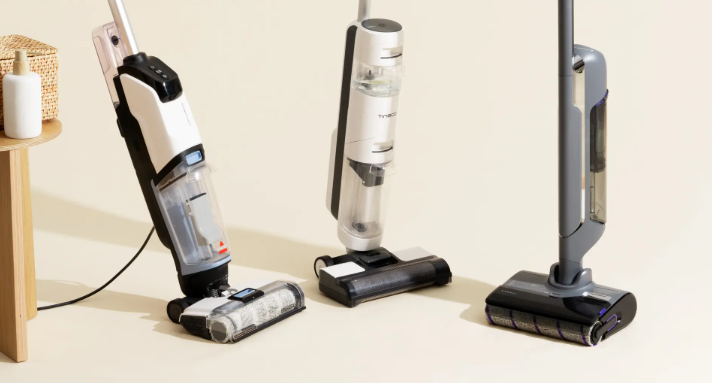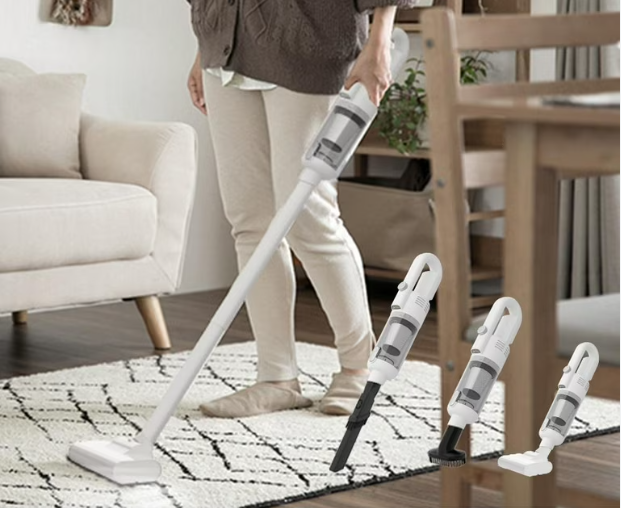Learning how to use a vacuum cleaner properly is key to keeping your home clean, extending the life of your vacuum, and ensuring efficient cleaning performance. Whether you own a stick, upright, robot, or canister vacuum, proper techniques and maintenance can make all the difference. This guide provides step-by-step instructions, expert vacuum cleaner tips, and advice on vacuum cleaner setup to maximize your cleaning results. From daily use to vacuum cleaner maintenance, we’ll cover everything you need to know to keep your floors and furniture spotless.
Why Knowing How to Use a Vacuum Cleaner Properly Matters
Using a vacuum cleaner correctly enhances its cleaning efficiency, prevents damage to floors or furniture, and ensures vacuum cleaner safety. Improper use can lead to reduced suction, motor strain, or even damage to delicate surfaces. Whether you’re vacuuming carpets, hard floors, or upholstery, this guide will help you master how to clean with a vacuum cleaner while avoiding common pitfalls. We’ll also address vacuum cleaner troubleshooting to keep your machine running smoothly. Let’s dive into the best practices for using your portable vacuum cleaner or any other model effectively.
Step-by-Step Guide: How to Use a Vacuum Cleaner Properly
1. Prepare Your Space
Before you start, set up your area for efficient cleaning:
- Clear Obstacles: Remove small items like toys, cords, or rugs to prevent clogs or tripping hazards.
- Check the Vacuum: Ensure the dustbin or bag is not full, filters are clean, and attachments are secure.
- Adjust Settings: Set the suction level and brush height for your floor type (low for hard floors, high for thick carpets).
- Robot Vacuums: Set up no-go zones via the app and clear clutter to avoid navigation issues.
Tip: For vacuum cleaner setup, consult your manual or app (for smart models) to configure settings like mapping or scheduling. Visit VacuumCleanerT for model-specific setup guides.
2. Choose the Right Attachment
Different surfaces require specific tools for optimal cleaning:
- Carpet Brush Roll: Use for carpets to agitate dirt; disable on hard floors to avoid scratches.
- Soft Brush: Ideal for delicate surfaces like hardwood, laminate, or upholstery.
- Crevice Tool: Perfect for sofa seams, corners, or baseboards.
- Upholstery Tool: Use for furniture, curtains, or mattresses.
- Pet Hair Tool: Turbo brushes tackle embedded pet hair on rugs or sofas.
Tip: Always test attachments on a small, hidden area to ensure they won’t damage delicate surfaces.

3. Vacuum with Proper Technique
The way you vacuum impacts cleaning efficiency and machine longevity:
- Slow, Overlapping Strokes: Move slowly in straight lines, overlapping each pass to ensure thorough cleaning.
- Multiple Passes: Vacuum high-traffic areas in different directions (north-south, then east-west) to lift stubborn dirt.
- Low Suction for Delicates: Use lower settings on rugs, upholstery, or hardwood to prevent damage.
- Robot Vacuums: Schedule daily runs and use app settings to target specific rooms.
Tip: For how to clean with a vacuum cleaner on carpets, adjust the height setting to ensure the brush roll makes light contact without straining the motor.
4. Focus on High-Traffic and Hidden Areas
Pay special attention to areas that collect the most dirt:
- Entryways and Hallways: Vacuum daily to remove tracked-in dirt.
- Under Furniture: Use a crevice tool or low-profile robot vacuum to clean under sofas or beds.
- Edges and Corners: Use side brushes (robots) or crevice tools to tackle baseboards.
- Upholstery: Vacuum sofas and cushions weekly with a soft brush to remove pet hair and dust.
5. Empty and Clean After Each Use
To maintain suction and hygiene:
- Dustbin/Bag: Empty bagless models after each use; replace bags when two-thirds full.
- Filters: Check for clogs and rinse washable filters monthly.
- Brushes: Remove hair and debris from rollers to prevent tangles.
Tip: Regular vacuum cleaner maintenance prevents performance issues. Learn more at VacuumCleanerT.
Vacuum Cleaner Safety Tips
Using a vacuum cleaner safely protects both you and your home:
- Avoid Overloading: Don’t vacuum heavy or sharp objects like coins or glass to prevent clogs or damage.
- Cord Management: Keep cords untangled and away from the brush roll to avoid electrical hazards.
- Robot Vacuums: Set up boundary strips or virtual walls to prevent falls down stairs.
- Children and Pets: Keep them away during operation to avoid accidents.
- Test Surfaces: Use low suction on delicate rugs or upholstery to prevent pulling threads.
Tip: For vacuum cleaner safety, always unplug corded models before cleaning or adjusting attachments.
Vacuum Cleaner Setup for Optimal Use
Proper vacuum cleaner setup ensures peak performance:
- Read the Manual: Follow manufacturer instructions for assembly and initial use.
- Smart Vacuums: Connect to a 2.4 GHz Wi-Fi network for app control (e.g., iRobot or Roborock apps).
- Charge Fully: For cordless models, charge for 3-6 hours before first use.
- Test Settings: Run a short test on each floor type to adjust suction and brush height.
- Robot Mapping: Allow 1-2 runs to create a home map for efficient cleaning.

Vacuum Cleaner Troubleshooting
Even with proper use, issues can arise. Here are common vacuum cleaner troubleshooting tips:
- Weak Suction: Empty the dustbin, clean filters, and check for clogs in hoses or attachments.
- Loud Noises: Inspect for debris in the brush roll or blockages in the airflow path.
- Battery Issues: Ensure proper charging; avoid letting cordless models fully discharge.
- Robot Navigation Errors: Clear obstacles, clean sensors, and reset maps via the app.
- Brush Not Spinning: Remove tangled hair or threads; check the belt on upright models.
Tip: For detailed vacuum cleaner troubleshooting, visit VacuumCleanerT for model-specific solutions.
Vacuum Cleaner Maintenance for Longevity
Regular vacuum cleaner maintenance keeps your machine running efficiently:
- Filters: Rinse washable filters every 1-3 months; replace non-washable ones every 6-12 months.
- Brushes: Clean brush rolls weekly to remove hair and debris.
- Dustbin/Bags: Empty bagless bins after each use; replace bags before they overfill.
- Hoses and Cords: Check for kinks or cracks; store loosely to avoid damage.
- Sensors (Robots): Wipe sensors and cameras monthly to ensure accurate navigation.
Additional Vacuum Cleaner Tips for Specific Surfaces
Different surfaces require tailored approaches to how to use a vacuum cleaner properly:
- Hard Floors: Disable brush rolls to prevent scratches; use soft roller heads (e.g., Dyson Fluffy).
- Carpets: Adjust height to the highest setting for thick pile; use turbo mode for embedded dirt.
- Upholstery: Use a soft brush or upholstery tool on low suction to avoid fabric damage.
- Pet Hair: Opt for pet-specific attachments or high-suction modes to lift fur.
- Delicate Rugs: Test low suction first; avoid brush rolls on handmade or antique rugs.
Common Mistakes to Avoid
To ensure you’re mastering how to use a vacuum cleaner properly, avoid these pitfalls:
- Vacuuming Too Quickly: Fast passes miss dirt; slow down for thorough cleaning.
- Ignoring Maintenance: Neglecting filters or dustbins reduces suction and strains the motor.
- Using Wrong Settings: High suction on delicate surfaces can cause damage.
- Overfilling Dustbins: Empty before they’re full to maintain performance.
- Ignoring Obstacles: Clear small items to prevent clogs or robot malfunctions.
Conclusion: Master How to Use a Vacuum Cleaner Properly
Knowing how to use a vacuum cleaner properly transforms your cleaning routine into an efficient, effective task. By preparing your space, choosing the right attachments, using proper techniques, and maintaining your vacuum, you’ll achieve spotless results while extending your machine’s lifespan. Whether you’re using a portable vacuum cleaner, upright, or robot model, our best vacuum cleaner guide ensures you clean smarter, not harder. For more advice on vacuum cleaner maintenance, safety, and troubleshooting, explore VacuumCleanerT today.